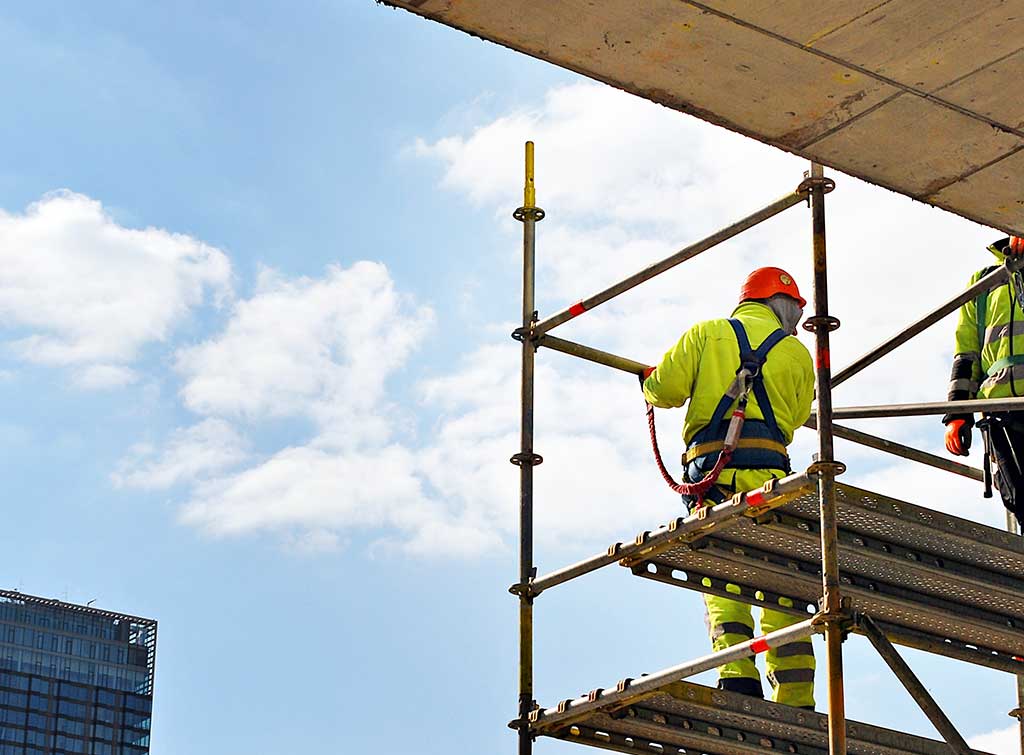Introduction to Scaffolding Regulations in Cornwall
Why Scaffolding Regulations Matter
Scaffolding regulations are designed to ensure the safety of workers, the public, and property during construction projects. Improperly erected or maintained scaffolding can lead to accidents, including falls from height, which are among the leading causes of serious injuries and fatalities in the construction industry. By adhering to regulations, you minimise the risk of accidents, create a safer working environment, and protect your business from potential legal and financial consequences. Complying with these laws helps maintain project timelines, avoid costly fines, and ensure that all construction work meets legal standards.
Overview of UK Scaffolding Laws and Standards
The UK has a robust framework of laws and standards governing the use of scaffolding to ensure safety on construction sites. These regulations are designed to prevent accidents and ensure that scaffolding structures are stable and fit for purpose. Key pieces of legislation include:
- Health and Safety at Work Act 1974
This foundational law outlines the responsibilities of employers to ensure the safety of their workers and the public. It mandates that all scaffolding work must be planned, supervised, and carried out by qualified individuals to prevent accidents and injuries. - Work at Height Regulations 2005
These regulations specifically address working at height, which includes scaffolding. They require employers to conduct risk assessments, provide appropriate safety equipment, and ensure that workers are properly trained. The regulations also call for regular inspections of scaffolding before use and after any changes are made to the structure. - Construction (Design and Management) Regulations 2015 (CDM)
The CDM regulations place specific duties on project managers, designers, and contractors to manage health and safety risks during construction work. For scaffolding, this includes ensuring that proper planning, installation, and dismantling procedures are followed, with an emphasis on minimising risks to workers and the public. - BS EN 12811-1: Temporary Works Equipment Standard
This is the British Standard for scaffolding, providing guidelines for the design, materials, and performance requirements of temporary works like scaffolding. It covers aspects such as load-bearing capacities, dimensions, and structural integrity, ensuring that scaffolding is strong, stable, and safe for use.
These regulations collectively ensure that scaffolding is used safely and effectively across the UK, reducing risks and ensuring compliance with legal standards.
Key Scaffolding Safety Requirements in Cornwall
– Risk Assessments
Pre-work assessments are a critical first step before any scaffolding is erected on a construction site. These assessments allow for a thorough evaluation of the environment, potential risks, and specific project requirements. By conducting a detailed risk assessment, project managers and scaffolders can identify hazards such as uneven ground, overhead obstacles, or environmental conditions that may affect the safety and stability of the scaffolding.
– Site Inspections
Frequent inspections are vital because scaffolding structures are subject to changing conditions on site, especially in Cornwall where the weather can change drastically from one moment to the next! These inspections help to identify and address issues such as loose connections, shifting supports, or weather damage, ensuring that the scaffolding remains safe and compliant with legal requirements. Failure to carry out regular inspections can result in accidents, legal penalties, and project delays.
- Before first use – After the initial erection of the scaffolding, it must be inspected by a competent person to ensure it meets safety standards and is fit for use.
- Every 7 days – Throughout the project, scaffolding must be re-inspected at least once a week to check for any signs of wear, damage, or instability that could compromise safety.
- After any modifications or adverse weather – If the scaffolding has been altered or dismantled, or if there has been severe weather (e.g., high winds, storms), a thorough inspection must be conducted before it is used again
– Proper Erection and Dismantling of Scaffolding
The proper erection and dismantling of scaffolding are crucial stages in any construction project, as these steps set the foundation for a safe and stable working environment. Scaffolding must be assembled in a way that ensures its structural integrity, taking into account the site conditions, load-bearing requirements, and any potential hazards. Dismantling is equally important, as improper removal can lead to accidents, damage to the building, or instability in other parts of the structure.
The process involves careful planning, precise execution, and thorough supervision to meet safety standards. It includes ensuring that:
- Scaffolding is erected on solid, level ground to avoid shifting or collapse.
- All components are securely fastened and checked for proper alignment.
- Stability measures such as braces, ties, and anchors are in place to prevent tipping or swaying.
- Safe access points (such as ladders or stairs) are provided for workers.
- Dismantling follows a reverse process with controlled removal of components to avoid sudden collapses or destabilisation.
– Competence of Scaffolders
When hiring a scaffolder, the competence of the team is key to ensuring the safety and quality of scaffolding work. In the UK, scaffolders are required to undergo specific training and hold certification through the Construction Industry Scaffolders Record Scheme (CISRS). This ensures they have the necessary knowledge and skills to erect, modify, and dismantle scaffolding according to industry standards and safety regulations. Only trained scaffolders are allowed to carry out high-risk tasks like assembling or disassembling scaffolding at height, ensuring that all work is done efficiently and safely.
Proper erection and dismantling are not only critical for safety but also for ensuring that the scaffolding complies with UK regulations such as the Work at Height Regulations 2005, which mandates that these tasks be performed by trained and competent individuals.
– Load-Bearing Standards and Maximum Load Capacity
The stability of scaffolding heavily relies on adhering to strict load-bearing standards and ensuring the structure’s maximum load capacity is not exceeded. Failing to meet load capacity standards can result in scaffolding failure, leading to accidents, injuries, and project delays.
Before scaffolding is erected, a thorough assessment must be made to determine the type of work that will be carried out, the number of workers using the scaffolding, and the weight of materials and equipment that will be stored on it. Each scaffolding system has a maximum intended load, which must never be exceeded.
To ensure scaffolding can support the required weight:
- Calculate the total load: This includes the weight of workers, tools, and any building materials that will be on the scaffolding simultaneously.
- Distribute loads evenly: Concentrating heavy materials in one area can lead to localized pressure that exceeds the structure’s capacity, so loads must be spread out across the platform.
- Consider dynamic loads: Movement of workers and materials can create dynamic forces that add to the load. These forces must be accounted for to avoid instability.
- Respect weight limits: All scaffolding must be rated for the anticipated load, and no load exceeding the specified limit should be placed on the structure.
– Material Strength and Stability Requirements
Scaffolding materials, such as steel or aluminum, must meet specific strength and stability requirements to safely support loads and remain structurally sound. UK regulations, such as BS EN 12811-1: Temporary Works Equipment Standard, outline the specifications for scaffolding components, ensuring they are fit for purpose and capable of supporting the loads placed upon them. To meet these requirements, the following factors are critical:
- High-quality materials: Scaffolding must be constructed using durable materials such as galvanized steel or aluminum that can withstand heavy loads without bending or breaking. These materials are chosen for their strength-to-weight ratios, corrosion resistance, and ability to support the required weight over extended periods.
- Scaffolding components: Every component, including tubes, joints, ledgers, and braces, must meet the relevant strength requirements. For example, scaffold tubes are typically designed to carry axial loads (compression) and resist bending, while braces help prevent lateral movement and increase overall stability.
- Base and ground stability: The scaffolding must be erected on firm, level ground to ensure the structure is stable and capable of supporting the full load. Uneven surfaces or soft ground can lead to instability, which may compromise the scaffolding’s ability to carry the required weight.
- Use of bracing and ties: To increase stability, scaffolding is often anchored to the building using ties and reinforced with diagonal bracing. These measures help prevent swaying and collapse under load, particularly in adverse weather or high-wind conditions.
- Safety margins: Scaffolding is typically designed with a safety factor, meaning it can hold more weight than the maximum intended load. This ensures that even if there are unplanned surges in load (e.g., multiple workers in one area), the structure can still maintain its integrity.
Penalties for Non-Compliance with Scaffolding Regulations
Failure to comply with scaffolding regulations in the UK can result in serious legal and financial repercussions for businesses, site managers, and employers. The strict regulations governing scaffolding, such as the Work at Height Regulations 2005 and the Health and Safety at Work Act 1974, are enforced to ensure the safety of workers, the public, and property. Non-compliance can lead to penalties including fines, legal action, and employer liability for accidents, especially when inspections reveal that safety standards have been neglected.
Fines for non-compliance with scaffolding regulations can be severe. The Health and Safety Executive (HSE) has the authority to issue penalties for breaches of safety standards. Depending on the severity of the breach, fines can range from thousands to millions of pounds, particularly in cases where non-compliance results in injury or death.
- Fixed penalties: For minor breaches, companies may be issued fixed fines or improvement notices, requiring them to address safety deficiencies within a specific timeframe.
- Unlimited fines: For serious breaches, such as failure to maintain scaffolding or disregarding safety protocols, there is no upper limit to the fines imposed by the courts. This is especially true if the breach leads to serious injury or fatal accidents.
How to Avoid Penalties and Stay Compliant
Simple – choose an experienced, professional scaffolding company like 7 Bays Scaffolding to ensure your project stays safe, compliant, and free from costly fines or legal troubles. Our team is trained to meet all safety standards and ensures that your scaffolding complies with all legal requirements, helping you avoid any penalties from non-compliance. 7 Bays Scaffolding provides full documentation for risk assessments, scaffolding inspections, and safety protocols, offering transparency and proof of compliance in the event of a regulatory inspection. This helps you demonstrate due diligence and commitment to safety, which is essential to avoiding penalties.
By choosing 7 Bays Scaffolding, you not only get expert service but also peace of mind, knowing that your project will be completed safely and within the law, reducing the risk of fines, legal action, and unnecessary delays. Get in touch today and let us take the load for you.



